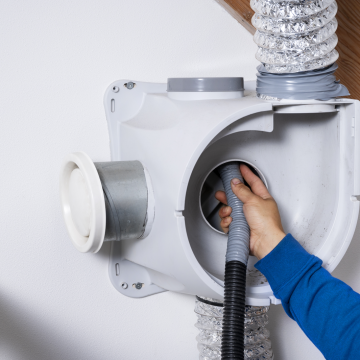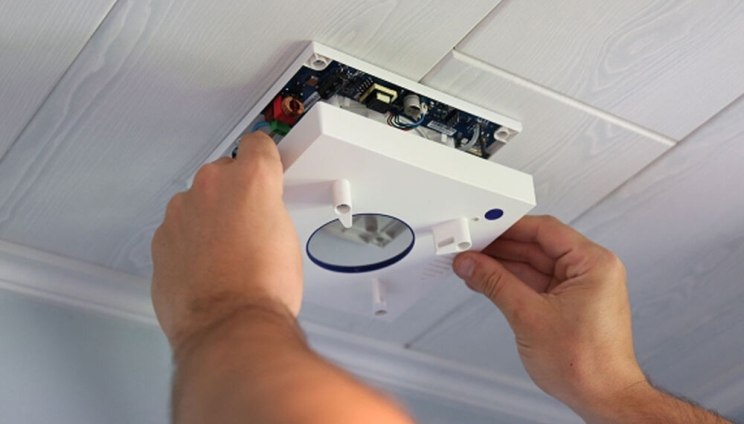

Good ventilation is important in any home. This is especially true for damp rooms like the bathroom. A bathroom fan helps to freshen the air, remove odours and prevent moisture problems (think mould). Installing a bathroom fan is not very complicated, making it a great do-it-yourself project. But how can you connect a bathroom fan easily and safely?


The first step is to determine the correct location for the bathroom fan. Placing the fan close to the bath or shower wall is not a good idea because of the safety risks (moisture can cause a short circuit). Would you like advice on where to place your bathroom extractor? Then contact us.
The advice when installing a bathroom fan is to make it as technically simple as possible. In order to optimise airflow efficiency, it is important to remove obstacles. So when connecting a bathroom fan, bear the following in mind:
1. Make sure the exhaust pipe is as short as possible. The longer the exhaust pipe, the lower the capacity. For proper operation of the bathroom fan, it is preferable to use a straight spiro duct no longer than 1,5 metres.
2. If possible, choose a straight path to the outside. Bends reduce the flow capacity.
3. The larger the diameter the better. If technically possible, choose a 125 or 150 mm duct.
To install a bathroom fan, you need a few things. Make sure you have the following tools:
Choosing the right type of bathroom fan is crucial. At Intovent you can choose from a wide range of bathroom fans. This means that you are always sure to find a bathroom fan that suits your situation. Because there is so much to choose from, there is a risk that you will lose sight of the bigger picture. If this is the case, please contact us for tailored advice.
Alright, all materials are in place. Time to install the bathroom fan! Follow this roadmap:
1. Always open a window. Even during installation, ventilation is important, especially if you are drilling and releasing dust particles.
2. Double-check that the power is off. Installing it yourself is fun, but it should be done responsibly. Especially when working with electricity, you do not want to take any risks, so always double-check that the power is off. Preferably use a multimeter, or else a voltage detector.
3. Take your time. This may seem like stating the obvious, but this message is still important. Avoid rushing and take your time to install the bathroom fan carefully.
There are several ways to control a bathroom fan. The simplest option is a light switch or a pull cord. You can also opt for automation, such as a motion sensor. Convenient, but the downside is that the fan starts every time someone enters the bathroom. This can be a bit much. The same goes for connecting the bathroom fan to a light switch. Another option is to choose a humidity sensor: it automatically measures the humidity and controls the bathroom fan. If the humidity is too high, the fan switches on automatically. When the level is acceptable again, the fan switches off automatically.
In this article we have outlined what is needed to connect a bathroom fan. In principle, you can install a bathroom fan yourself, but you need to know what you are doing. After all, you are working in a wet room with electricity and this needs to be done responsibly. If you do it yourself, it is always at your own risk.
Do you want to be sure that everything is installed safely and neatly? Then hire a professional. This is also the advice if it is necessary to install the bathroom fan in zone 1. In this case, it is better to opt for a duct fan, pipe fan or mechanical ventilation, and this is a job for a professional.





